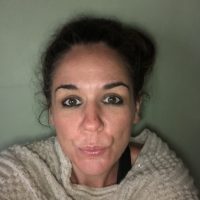View this post on Instagram
Within my sphere, I’m picking up on a new energy.
It feels like a rework of the vibrant 60s’ free-love vibe, albeit turbo-charged by the digital age.
This energy is already manifesting, and more people are opting for polyamorous relationships, looking to cut out the emotional baggage that often accompanies sexual connections. Whilst others are opting to be in monogamous partnerships but have no desire to merge with their partner, often choosing to live alone—their key motivation to retain self-identity.
To me, it feels like the paradigm is shifting away from the traditional expectations we once had of our lovers.
Within the spiritual community, these new approaches are being taken as another sign that the Age of Aquarius is beginning to flower. It’s believed that the core energies of this age will be freedom, liberation, and unconditional love (not just for those we’re shagging but across the whole landscape).
I’m sure most will agree as a collective that we’re not there quite yet. There is work still to be done.
It may be in its infancy, but if we know where we’re headed it makes sense to lay the correct foundations:
1. Respect.
Back in my teenage dating days, there was a system called the “Three Fs”:
>> Find them
>> Fu*k them
>> Forget them
I certainly fell foul of this system a few times, and regretfully (although not under the banner of the “Three Fs”), have done similarly to others. It never felt like it was about having sex; this was about scoring points, with whom or for what purpose, I’m not sure, but within the mindset of duality, it felt like someone was keeping score.
Some may see this shift as a chance to deploy the “Three Fs.” However, as we move through this corridor into a new way of being, it should be seen as an opportunity to treat people as we wish to be treated, to be honest about our intentions, to communicate our respective emotional boundaries, and to be upfront about the parts of us we are willing to share.
2. Self-reliance.
Love as we understand it encompasses many wonderful things—the euphoric feeling, deep intimacy, and unapparelled understanding and empathy, but there are many undesirables energies such as jealousy, possessiveness, and fear that often accompany it.
When I was growing up, there were set expectations around the roles of females and males in a relationship. These roles were based on stereotypes, and we’re typically coming from a place of “lack”—therefore, we should expect our partner to make us whole.
These stereotypes can be mapped to the feminine and masculine energy archetypes. The feminine being the inward-looking energy—feeling and nurturing—and the masculine being the outward-facing energy—the one that takes action.
As a citizen of the world, I feel we’re at a place where the energy archetypes certainly transcend the gender stereotypes, but as a lesbian, I can say within a same sex relationship, often “roles” are assumed, and we’re back to the same place—needing another to complete us.
This attachment inhibits the flow of freedom and puts many conditions on our love. And all too often, we choose partners whom we surely love but who act as a mask to our insecurities.
I believe one requirement for this new paradigm will be for us to achieve the union of the self, to balance ourselves so we need not look outside ourselves for remedy, to be reliant on ourselves for our needs, and to love purely for love rather than necessity. The hope being that this liberation gives us the power to remove the less desirable energies from love.
3. Make peace with being vulnerable.
There’s a saying that bravery isn’t the absence of fear but the management of it, and I think we need to apply the same logic to being vulnerable.
I feel as the energies gain momentum, many may look to use them to avoid getting hurt. The idea of complete detachment from our lovers is extremely appealing when wounded. It never works out this way though, and we end up being a bit of a f*ckwit, or as the professionals call it, emotionally unavailable.
This half-in-half-out approach is a non-starter and has been for some time.
In the mind, it seems like a great proposition until our emotions come into play, then it’s a clusterf*ck. Horrible for the person trying to give love and equally as bad for the person who is unable to receive or reciprocate.
This should in theory be a low-hanging fruit for the new paradigm. To a certain degree, it’s undoing a lot of the wrong that’s been done in the past. We can look at it as the zero point, where we’re there together as one, trying to forge the way ahead.
Deep hurt and love are two sides of the same coin, and we need to flip it. This means standing in the middle of the storm and letting it wash over us and help us find strength in love to be able to accept and manage our weaknesses.











Read 2 comments and reply